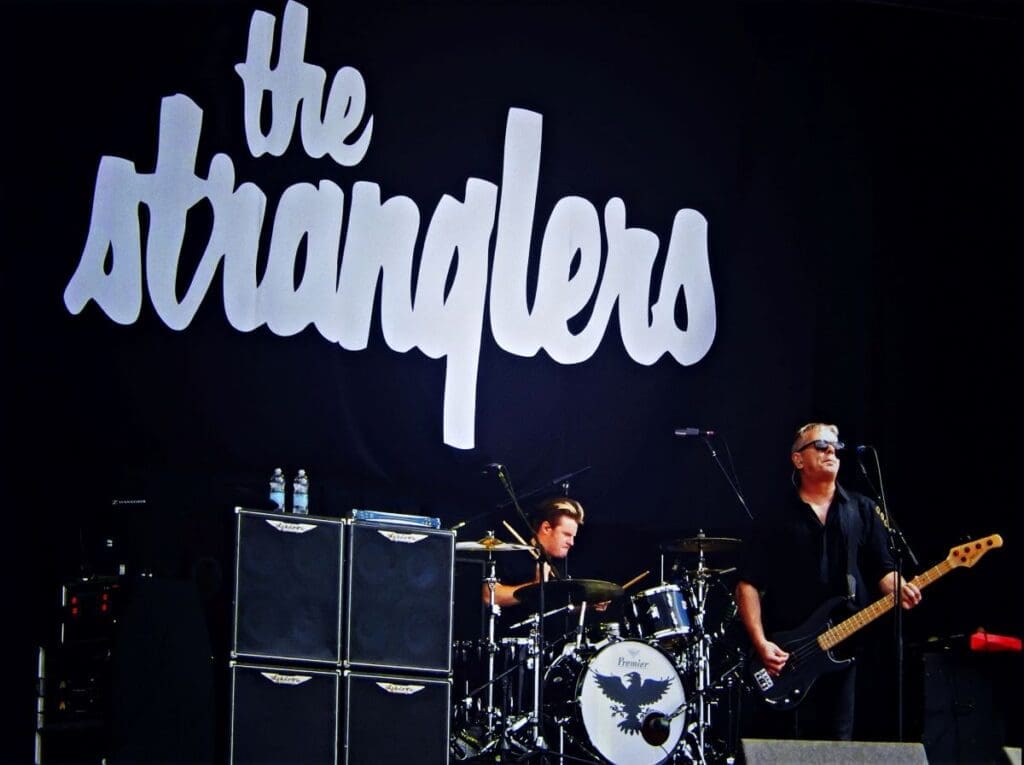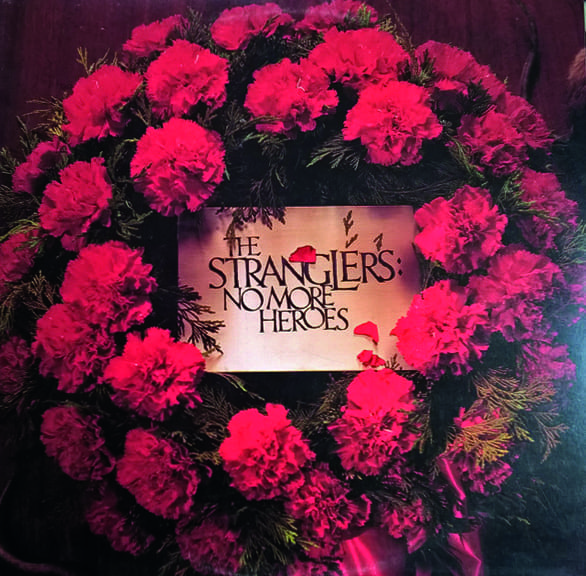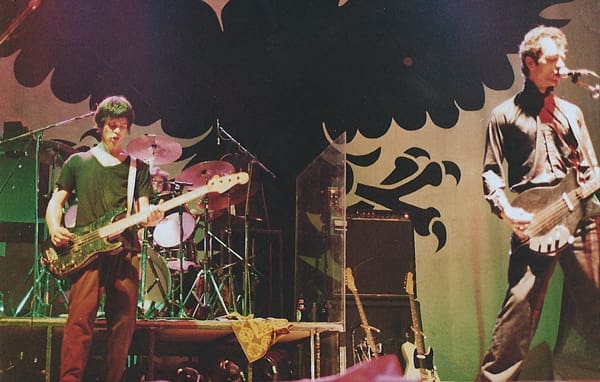To celebrate their 50th anniversary concert tour, Colin Mayo listens to the extensive back catalogue of the Stranglers

On 8 March the Stranglers started their 50th anniversary concert tour in Glasgow having rereleased some of their earlier albums. It’s been a crazy, disjointed, and chaotic 50 years for the lads who started life as the Guildford Stranglers in early 1974. They were formed by ex-ice-cream salesman and drummer Jet Black (Brian Duffy) who used an ice-cream van as a tour bus and his Guildford off-licence the Jackpot as a residence of the fledgling group. Two members, including Duffy, have died, there have been numerous personnel changes, frequent record label switches and even imprisonment, yet the Stranglers – and their iconoclastic music – live on. “Something” has certainly changed.
The Stranglers were registered as a business by Duffy on 11 September 1974 and quickly became associated with the burgeoning punk scene. In 1976, they signed for United Artists and released the album Rattus Norvegicus on 15 April 1977 and their second, critically acclaimed album, No More Heroes, on 23 September 1977. The talent-spotting BBC DJ John Peel championed the group and invited them to play on the Peel Sessions. He was so enamored with the band that he played their entire third album, Black and White (1978), on his BBC Radio 1 slot.
Enjoy more Best of British Magazine reading every month.
Click here to subscribe & save.
The early band consisted of Jet Black on drums, bass player/singer Jean-Jacques Burnel, guitarist/singer Hugh Cornwell, and keyboardist/guitarist Hans Wärmling, who was replaced by singer/keyboardist Dave Greenfield within a year. Guitarist John Ellis and vocalist Paul Roberts joined the group in 1990, replacing Cornwell, who had left saying he “didn’t want to be doing the songs by rote, exactly the same with the same people.” Later, in 2000, Baz Warne took the place of Ellis and in 2006 Roberts left and was not replaced; instead, the band reverted to a four-piece. The current line-up consists of Jean-Jacques Burnel, Baz Warne (guitar/vocals), Jim Macaulay (drums/vocals) and Toby Hounsham (keyboard/vocals).
Although Black is credited with forming the Stranglers, Cornwell and Wärmling were the driving force musically and wrote many of the early songs.
In 1972, biochemistry graduate Cornwell was a postgraduate researcher doing lab work in Sweden when he met Wärmling – a songwriter in his spare time. Together with other musicians, they formed the band Johnny Sox and returned to London to tour pubs. Black soon joined as a drummer. Later, Wärmling left and was replaced by the virtuoso keyboardist and songwriter Dave Greenfield who answered an advert in Melody Maker.
I was 13 when the Stranglers made their debut in 1977 and remember my introduction to them during a metal work lesson at the comprehensive school I attended. The teacher, Mr Bolton, allowed cassettes to be brought in and would snap them into his small player so we could listen to music as we worked. A friend, who was a punk, had their debut album Rattus Norvegicus and suddenly the words: “Walking along the beaches, looking at the peaches” from the song Peaches boomed across the large room much to the amusement of my fellow classmates. Fortunately, I don’t think Mr Bolton registered the lyrics.
I also remember being rather taken aback by the No More Heroes inner record sleeve which my friend showed me as it had a rat popping its head out of a red wreath (a rat is the group’s logo). While my favourite bands of that time were the Jam and Blondie, I also enjoyed listening to punk/new wave acts such as the Clash, Sex Pistols, the Damned, the Members, the Ruts, Skids, Tom Robinson Band, the Boomtown Rats and many others and would often buy their albums and singles. Fortunately, the south London suburb of Croydon, where I lived, was served by an excellent secondhand record shop named Beanos on Surrey Street as well as other commercial high street record stores.


On 11 August 1979, I remember the song Duchess being previewed on BBC One’s Juke Box Jury and being mesmerised by its haunting keyboard rhythms. I was delighted when Blue Peter’s Lesley Judd gave it a “hit” paddle and I immediately went to the local HMV record shop and bought a copy – it remains one of my favourite Stranglers songs along with Always the Sun (1986), Something Better Change (1977) and European Female (1982). Duchess appeared on the Stranglers’ fourth album, The Raven (1979), which along with Black and White (1978) and No More Heroes (1977), established the band as one of the top punk acts.
Unlike a lot of punk bands of the time, the Stranglers were very competent and versatile musicians with a unique sound created by Burnel’s melancholic bass lines and Greenfield’s harmonious keyboard rhythms which have been compared to Ray Manzarek of the Doors. Indeed, the Stranglers listed the Doors as a major musical influence as well as the likes of the Velvet Underground, Jimi Hendrix, and the Beatles.
These influences, and the fact the group had three accomplished songwriters in Brunel, Cornwell and Greenfield (although the tracks are often credited to the whole band), meant they were able to create such diverse songs as the troubling and mesmerizing Strange Little Girl (1982) (written by Cornwell and Wärmling), the thought-provoking Always the Sun (1986) and Skin Deep (1984), the melodic and mischievous Golden Brown (1982) as well as the raucous, more punky anthems No More Heroes (September 1977) and Something Better Change (July 1977). No More Heros contains the famous Cornwell snarled line:
“Whatever happened to Leon Trotsky? He got an ice pick, that made his ears burn…”
On 21 June 1980, the Stranglers became embroiled in a standoff between French police and students at Nice University. The band were due to play at the venue but they were not allowed to use any power points in the university so they had to source electricity from generators outside the university boundaries, running cables overhead as the authorities wouldn’t even allow the electric cables to touch the hallowed university ground.


The result was power outages and the show suffering multiple interruptions. Eventually the band apologised to the audience and left the stage – cue a riot. The Stranglers were arrested, spent 36 hours in police custody and were stuck in Nice for seven days while their lawyers agreed a settlement. Eventually, they had to pay a hefty fine but from being unknown in France, they became household names, and the incident spawned the song Nice in Nice (1986).
Despite these setbacks, the Stranglers are the most successful punk band and have sold more than 40m records which has included seven top ten singles and nine Top 10 albums having released 18 studio albums and 23 UK singles. Golden Brown, written by Cornwell about heroin and sex, is the band’s most successful single. They still maintain a very loyal fanbase and their music has been exposed to younger generations with millions of downloads and plays on Spotify and YouTube. They are also credited with introducing punk to Iceland when they flew journalists to the country to launch Black and White (1978), which ended with a sold-out concert. In fact, 2% of country’s population saw the event and Icelandic punk was born.
As the Stranglers embark on their 50th anniversary tour, this incredibly gifted and musically diverse band will be able to call upon an extensive back catalogue, which includes some of the best songs recorded by any British music artists in the past half century.
The Stranglers’ 50th Anniversary UK/Ireland Tour began at Clyde Auditorium, Glasgow on 8 March. For tickets and tour dates, go to thestranglers.co.uk

